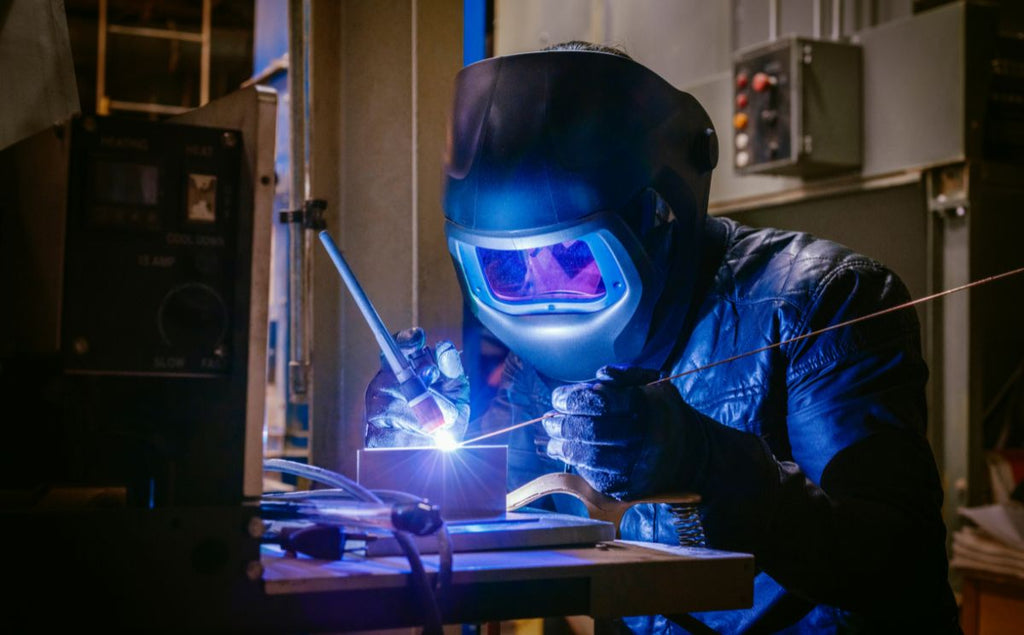Welding WPS: Typical Blunders to Avoid and Exactly How to Correct Them
Wiki Article
The Ultimate Overview to Welding WPS Procedures: An Extensive Summary for Welders
In the intricate world of welding, Welding Procedure Specifications (WPS) offer as the foundation of making certain high quality, consistency, and safety in welding procedures (welding WPS). As we delve into the different components of a WPS and check out the details of credentials and certification, we will uncover the essential role these procedures play in the realm of welding.Significance of WPS Procedures
Understanding the significance of Welding Treatment Requirements (WPS) treatments is essential for making sure the high quality and stability of bonded structures. WPS procedures function as a roadmap for welders, laying out the required steps, specifications, and products needed to achieve an audio weld. By sticking to WPS guidelines, welders can ensure consistency in their job, leading to dependable and structurally sound welds.One of the main factors why WPS treatments are necessary is their duty in preserving weld top quality and stability. Complying with the specified welding specifications and techniques detailed in the WPS helps protect against problems such as porosity, cracking, or insufficient combination, which can compromise the stamina and durability of the weld.

Components of a WPS
A Welding Procedure Spec (WPS) generally consists of necessary components that detail the specific demands for carrying out a weld, making certain uniformity and top quality in the welding process. The key components of a WPS include necessary variables such as base metals, filler metals, preheat and interpass temperatures, welding processes, protecting gases, welding placements, and post-weld warmth therapy demands.Base steels describe the materials being signed up with, while filler metals are made use of to load the space between the base steels throughout welding. Preheat and interpass temperature levels are vital for managing the warm input and stopping concerns like cracking or distortion. The welding process describes the details technique to be used, whether it's gas metal arc welding (GMAW), secured metal arc welding (SMAW), or one more technique. Protecting gases shield the weld swimming pool from atmospheric contamination. Welding positions specify the positionings in which welding can be performed. Post-weld warmth treatment may be required to soothe stress and anxieties and improve the weld's buildings. A detailed understanding of these parts is essential for producing a extensive and reliable WPS.

Credentials and Accreditation
Having actually established the necessary parts of a Welding Procedure Specification (WPS), the focus now changes in the direction of the essential elements of certification and accreditation in welding methods.
Certification, on the various other hand, is the formal acknowledgment of a welder's credentials by a relevant certification body or organization. Welding accreditations are commonly based on the specific welding processes, materials, and settings a welder is certified to work with. Holding a valid welding certification shows that a welder satisfies industry requirements and is experienced to execute welding tasks to the required specifications.
Producing a WPS
To establish a Welding Procedure Requirements (WPS) that satisfies sector standards, mindful consideration of welding procedures, products, and operational criteria is essential. The initial action in creating a WPS is to determine the welding procedure to be made use of, such as gas steel arc welding (GMAW) or shielded metal arc welding (SMAW)
Applying and Monitoring WPS
Upon settling the detailed Welding Treatment Requirements (WPS) that carefully information welding processes, materials, functional specifications, and top quality assurance you could check here steps, the emphasis shifts to efficiently executing and checking the well-known procedures. Implementation includes guaranteeing that all welders associated with the job are acquainted with the WPS and follow it meticulously throughout the welding procedure. This requires providing adequate training and supervision to ensure adherence to the specified treatments. Keeping track of the WPS involves constant oversight to verify that welding activities straighten with the documented specs. Evaluations, screening, and top quality control actions are crucial elements of the monitoring process to recognize any kind of inconsistencies or concerns without delay. Regular audits and reviews of the welding procedures help in keeping uniformity and quality throughout the job. Efficient application and monitoring of the you could check here WPS are crucial for making certain the honesty, toughness, and security of the welded joints, inevitably adding to the total success of the welding job.Final Thought
Finally, understanding and adhering to Welding Procedure Specs (WPS) is critical for welders to ensure top quality, consistency, and safety in their job. By knowing the parts of a WPS, acquiring appropriate credentials and go to my blog accreditations, developing detailed treatments, and implementing and monitoring them efficiently, welders can improve their abilities and efficiency in welding methods. Sticking to WPS treatments is important for producing high-grade welds and meeting industry requirements.
In the intricate world of welding, Welding Procedure Specs (WPS) offer as the foundation of making certain quality, uniformity, and safety and security in welding procedures. The welding procedure describes the particular method to be used, whether it's gas metal arc welding (GMAW), secured steel arc welding (SMAW), or another method.To establish a Welding Treatment Requirements (WPS) that satisfies sector criteria, careful factor to consider of welding processes, materials, and operational parameters is important. The initial action in developing a WPS is to recognize the welding procedure to be utilized, such as gas steel arc welding (GMAW) or shielded steel arc welding (SMAW)Upon settling the extensive Welding Treatment Requirements (WPS) that thoroughly information welding processes, materials, operational parameters, and top quality guarantee procedures, the emphasis changes to properly carrying out and keeping an eye on the well established treatments.
Report this wiki page